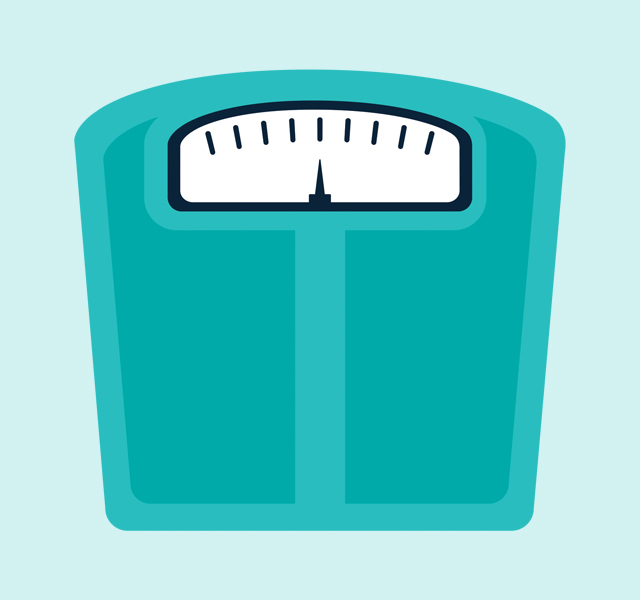The Cardiologist's Wife: Treating Childhood and Adolescent Obesity
The Cardiologist's Wife: Treating Childhood and Adolescent Obesity
Editor’s Note: This the first in a two-part series on obesity in children and adolescents. The second part of the series will be published in the April issue.
For the first time in 15 years, the American Academy of Pediatrics issued new guidelines for treating childhood and adolescent obesity. These recommendations emphasize that obesity is not just the result of poor eating habits, a lack willpower or of exercise. Due to scientific discoveries over the last few decades, obesity is now considered a chronic disease with many related causes, including genetics.
Because obesity is linked to other chronic diseases like heart disease, high blood pressure, type 2 diabetes and certain cancers, the guidelines stress that it is important to provide early and intensive treatment, even in children as young as 2. While these guidelines are focused on the treatment of obesity, guidelines on the prevention of excessive weight gain will be released in the future.
The old guidelines recommended delaying treatment for childhood obesity in the hope that they would outgrow it. Traditional treatments included increasing exercise and improving diet, which often did not help. Obesity rates continued to skyrocket. Before 1980, just 5% of American children were obese. By 2018, that number had quadrupled. Other countries are experiencing similar increases, and the World Health Organization warns that the number of obese individuals will place a significant burden on healthcare costs as the population ages.
Scientists have learned that individuals with obesity have an increased accumulation of fat that can’t always be attributed to eating too many calories or lacking physical activity. Instead, they suffer from impaired metabolic pathways that disorganize the body’s signals for hunger and fullness (metabolic pathways are chemical changes that take place in our cells to carry out basic cellular functions). Our bodies develop a set ideal body weight and are designed to decrease our metabolic rate when there isn’t sufficient food intake, i.e. dieting, in order not to dip below the ideal weight (the metabolic rate is the rate at which a body burns energy or calories). Therefore, efforts to lose weight are often futile or we regain what was lost, perhaps even more.
Children and adults who are overweight can be metabolically healthy, meaning they have normal blood sugar, cholesterol and blood pressure; but increasingly, doctors are diagnosing children with type 2 diabetes, high blood pressure and high cholesterol, all of which are risk factors for developing heart disease.
According to the AAP guidelines, the most effective behavioral treatment for overweight children is a referral to an intensive health, behavior and lifestyle treatment program which includes nutritionists, exercise coaches and social workers who work with the whole family, not just the individual. The AAP now advises that those 12 and over with obesity be treated with any of the approved weight loss drugs that suppress the appetite, while those 13 and over should be offered bariatric surgery.
While these are drastic and expensive interventions, the feeling is that obesity is so complex that it is difficult to overcome without significant effort. However, these types of programs are not available everywhere and insurance coverage varies, either refusing to pay outright or only paying for short term treatments. In a world where unhealthy food is everywhere — from the after-sport snacks to children’s birthday parties to movie theaters — those who struggle with weight face a steep uphill battle.
There is a strong link between obesity and mental health problems like depression. The bullying or teasing overweight children experience can lead to overeating for comfort not from hunger, social isolation and the avoidance of physical activity like group sports, all further contributing to the problem.
Since the pandemic began, there has been a large increase in the number of children with eating disorders like anorexia or bulimia, which can be common in overweight children. Care must be taken not to shame the child or make them feel guilty for something they have little control over. There are many doctors and parents who have concerns that the new guidelines will place additional stress on children’s mental well-being and increase the likelihood of eating disorders. Other concerns center around the idea of major surgery or giving drugs long term.
As always, all family members are encouraged to eat a healthy diet filled with real food, which means lots of vegetables, fruits, lean protein and whole grains. Avoid processed foods like chicken nuggets, chips, store bought sweets and pizza as these have little nutrition and are filled with junk calories. While you don’t have to prohibit sweets, do limit them to a small portion size and serve only occasionally, not daily. Do avoid sweet beverages, even fruit juices, as these can create sugar cravings.
The good news is that pediatricians will now be encouraged to talk with families about the best treatment option for their child that addresses both the complexity of obesity as well as the social stigma. These discussions should include any factors in the patient’s life that are affecting their health both positively and negatively while recognizing the conversation may trigger strong emotions. Parents should take a proactive role in their child’s health while being sensitive to their feelings.







